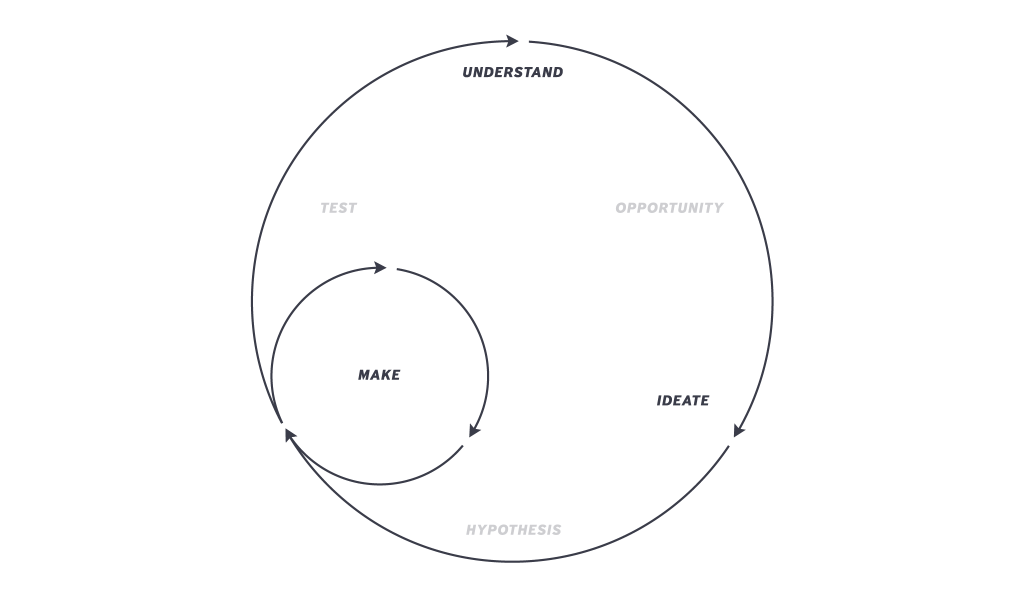2020: The Year of the RAT
Philosophie’s purpose is to create meaningful software. Software that people enjoy using. Software that gets real results for our clients. We’re not very tolerant of waste. We don’t like our clients to waste their money, time, and talent pursuing an idea that might not work out. Because of this, we put a lot of emphasis on validating ideas as we go.
One of my primary tools in validating new software ideas is the concept of Minimum Viable Product. When I talk about MVP, I’m thinking of the definition Eric Ries gives it in The Lean Startup: that version of a new product which allows a team to collect the maximum amount of validated learning about customers with the least effort. Unfortunately, in the day-to-day business vernacular, the term “MVP” has lost its connection to the objective of validation. Instead, it’s generally understood to mean, “the first thing we launch.” In the enterprise, this usually means something scalable, with good test coverage, a refined UI, and a whole lot of features (especially all of the ones the competitors have). That’s a whole lot of potential waste if customers don’t use the thing.
Last Saturday, Naroo Krishnan gave a talk on innovation that led me to an epiphany: why am I constantly trying to redefine what “MVP” means for people when there’s already a perfectly good term for what we do every day at Philosophie: Risky Assumption Testing.
Risky Assumption Tests are thoughtfully-planned experiments that validate or invalidate the types of things that may break a business plan. Does the problem you are solving exist? Have you identified a group of people that are willing to pay for you to solve it for them? Can you build the solution in the first place? Etc, etc, etc.
In the early stages of creating a new piece of software, RATs are superior to MVPs. They do everything an MVP is supposed to do, but faster, more clearly, and with less waste. RATs are minimal because their purpose is merely to learn fast and evolve ideas into ones that work. RATs don’t have to be viable because they are temporary. They certainly don’t have to be scalable. And in fact, a RAT doesn’t have to be a product in the first place.
Want to reduce risk in your business? Here’s a quick primer on RATs.
What can a RAT test?
RATs can be used to test every aspect of the product management Venn diagram: feasibility, desirability, and viability. Engineers can build rapid proofs-of-concept to test technical assumptions. Designers can test desirability and usability with prototypes, whether they be in paper, InVision, or code. Product Strategists can test viability through problem/solution interviews and landing page tests.
RATs aren’t limited to products and services, though. At Philosophie, we use Risky Assumption Testing in our hiring, important business decisions, policies, processes, and even our org chart.
Where do RATs come from?
Risky assumptions may be identified through the creation of a Business Model Canvas. We find risky assumptions about customers and what their problems are, the proposed solution, how we market it, the technology approach, the revenue model, the resources required to sustain it, and how much everything will cost. As you fill out and maintain a lean business model canvas, new assumptions constantly emerge. So we need a way to decide what assumptions to test and which to accept on the surface.
How do we know if a Risky Assumption is worth testing?
Any product has countless assumptions, and we don’t have time to test them all. So we prioritize them through a method we call the Innovation Backlog. The Innovation Backlog can be run in parallel with a typical product development backlog, but instead of user stories, it contains Opportunities and Experiments. Each Opportunity has its respective backlog of Experiments.
Is there a methodology for testing Risky Assumptions?

Finally, we use the Experiment-Driven Design process to systematically run the tests, capture the learnings, and refine the backlog(s). The idea is to reduce risks to a level acceptable by the product owner.
***
With that, I wish you a Happy Lunar New Year! Let’s bid farewell to the decade of MVP, and rejoice in welcoming the year of the RAT!








